
Ford were late to the crossover party, but the Puma’s all-round abilities make the wait worth it.
It’s hard to believe that Ford, a brand so skilled at making cars people truly want and then selling it to them in bundles, took so long to arrive at the crossover party. Until the launch of the Puma, anyone wanting a B-segment crossover with a blue oval on the nose had to make do with the dreary-looking and even drearier-driving Ford EcoSport. The EcoSport is where driving dreams go to die, so the Puma’s job is to undo the damage and give buyers a crossover endowed with the qualities which keep the Fiesta and Focus dominating the best-sellers list: great driveablity and solid value for money.
Here’s the headline: it does. How has Ford achieved it? By doing the most sensible and cost effective thing it could have done and started with the Fiesta platform and building upwards. That doesn’t mean it’s not without its weaknesses, and we’ll get to those later, but its strengths far outweigh any shortfalls, and the recent introduction of the Puma ST only goes to show the confidence of both Ford and car buyers in the product.
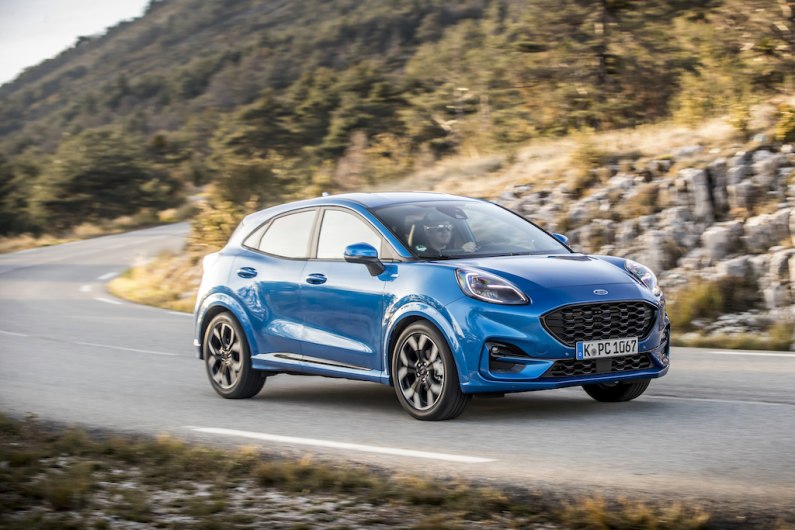
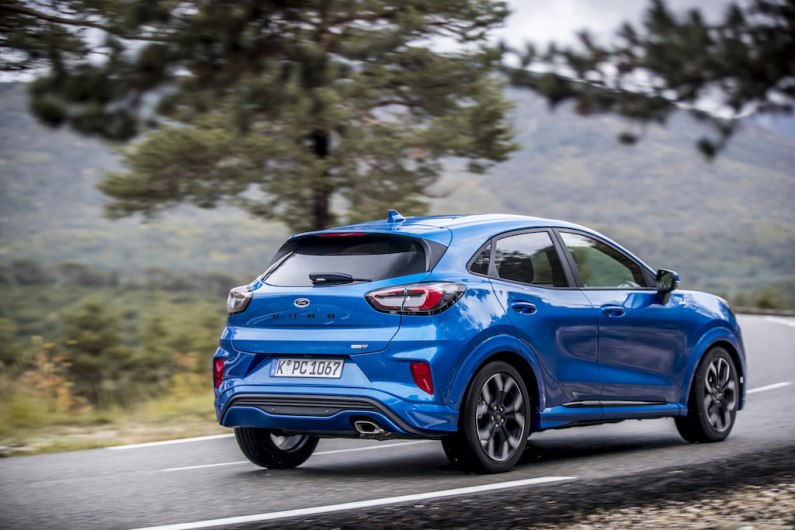
As you would with a review of the Fiesta, we still start with the Puma’s on-road capabilities. In terms of engines, there are three variants of Ford’s excellent 1-litre, 3-cylinder EcoBoost engine, two of which are mild-hybrid (MHEV) producing either 123bhp or 153bhp. The third option is a 123bhp pure combustion unit, which doesn’t benefit from the 50Nm of extra afforded by the belt-driven generator. The model I drove was the 153bhp MHEV in ST-line X trim, which comes with a six speed manual gearbox, 18-inch alloy wheels and sporty flourishes via the ST-Line body kit (note: the standard ST-Line comes with 17-inch wheels).
The extra dose of torque is extremely welcome, it’s off-the-line shove is noticeable and, combined with the turbo, belies the modest engine capacity. You’re fully aware too that the 48v system is stepping in where the turbo would normally lag, offering a smooth yet urgent response from the accelerator. With the ST-Line models comes sports suspension which makes the Puma well ahead in the segment in terms of cornering response. In fact it can almost feel fidgety and flighty over bump ground at speed, with the brittle suspension feeling a bit like the Big Dipper, but in terms of carving a line it does it with precision and style. It’s actually quite extraordinary how little body roll the Puma has considering it’s 54mm taller than the Fiesta.
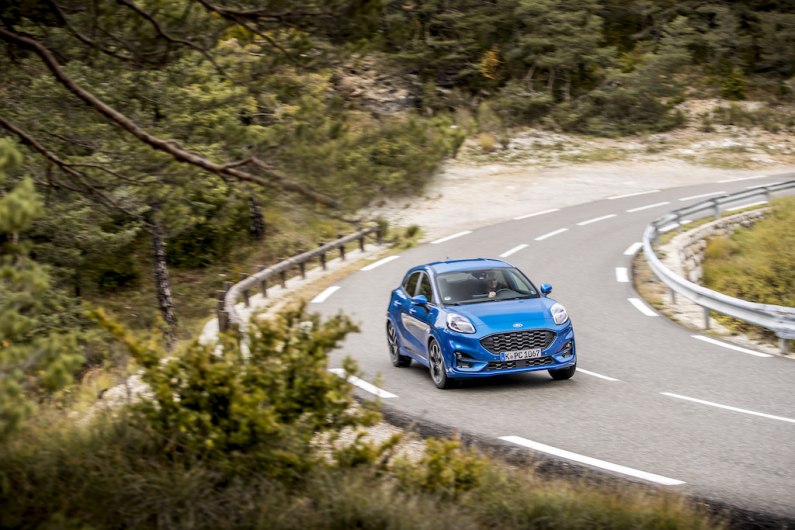
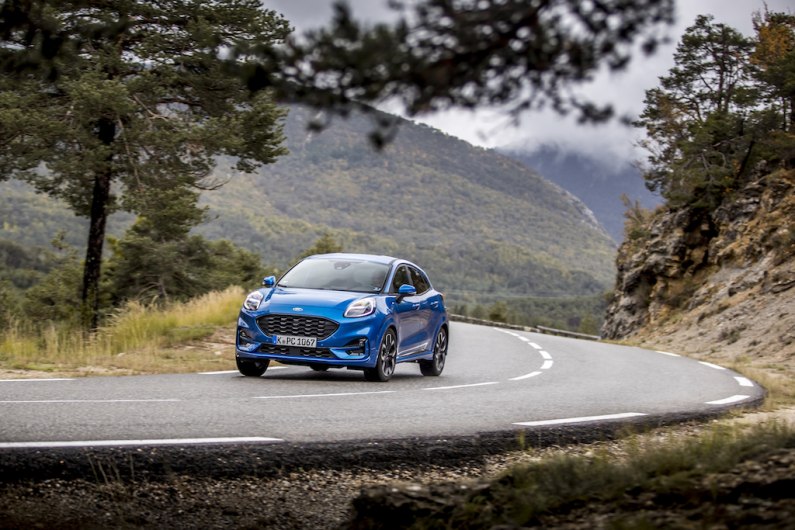
Steering feel is fine, but that’s it. It has as much weight the Fiesta or Focus, but it’s certainly responsive and eager to follow instruction. In the Puma the driver sits 6cm higher than in the Fiesta, and coupled with the cinematic windscreen and generous amounts of glass between the B and C pillar visibility is excellent, but you don’t get that same feeling of loftiness from the driver seat, which is a good thing if you want your crossover to feel like a car, not so good if you want to be king of the castle.
Speaking personally, I would prefer the 17-inch wheels if I were to buy the Puma. It got a bit rumbly down below on the motorway, and the electric unit has a habit of shouting at high revs, but it’s not the worst by a long way. The fact the Puma shuts off a cylinder when acceptable to do so is a welcome feature, and it will easily achieve 50mpg when not being thrashed within an inch of its life. The 48v system also recuperates power under deceleration, but not to the extent that you get much benefit in terms of one-pedal slowing power, but you can monitor what it’s up to via the digital driver display which, if nothing else, is proof Ford has developed some MHEV-specific software rather than given the Puma a standard Fiesta’s setup.
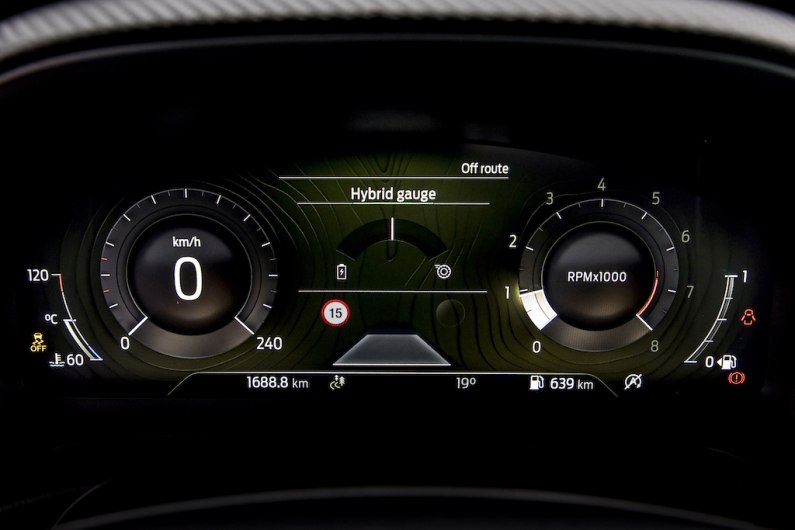
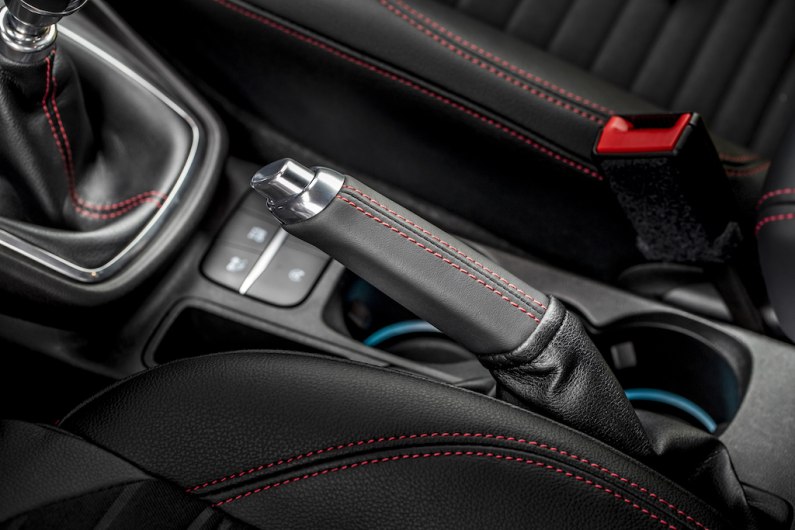
Ford is getting good at working out what’s actually important for a family car interior, rather than trying to convince us that the more premium-feeling the cabin is, the better it is. To that end the seat upholstery is all unzippable so you can stick it in the washing machine, which will make parents and dog owners very happy. Then there’s the fully-waterproof ‘megabox’ hidden storage bin beneath the boot floor which adds 80-litres of storage, taking the total room to 456-litres. It even has a plug to let the moisture and muck drain out.
Despite sharing its underpinnings with the Fiesta, the Puma’s wheelbase is 94mm longer than the supermini’s, which means legroom is ample for passengers in the back, plus being 71mm wider there’s more freedom to move around. It feels noticeably roomier than its cousin, and there’s more than enough headroom in the front. The raked rear windscreen starts its decent behind the back seats, so headroom in the back isn’t compromised either.
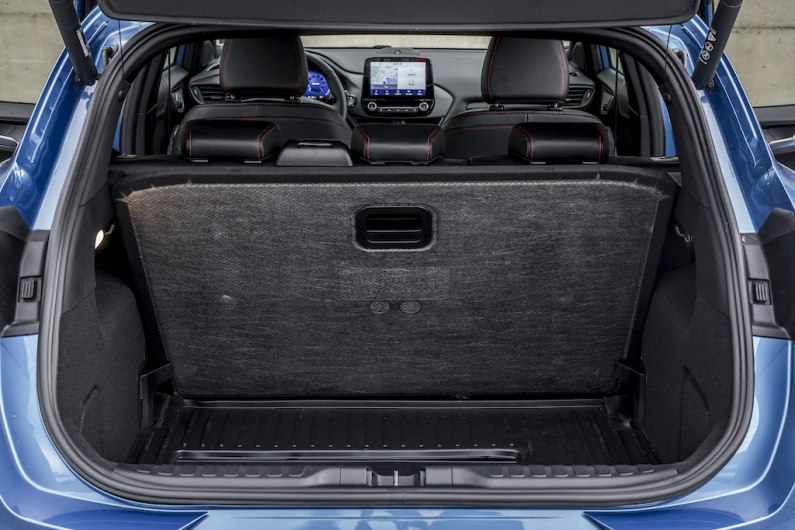
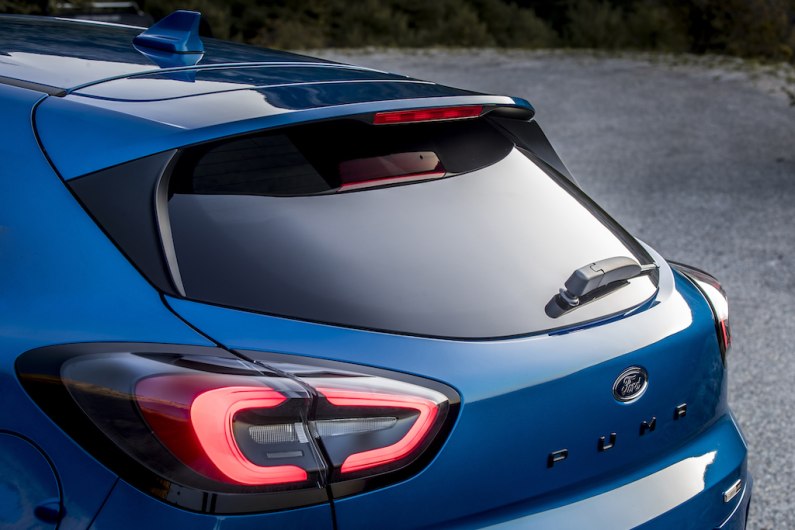
The view from the front seats will be familiar to anyone who has driven a modern Ford: plenty of black gloss trim and soft-ish fabrics in the right places. Ford’s Synch 3 infotainment system is intuitive and sensible but can be slow to power up and recognise the synced phones. More annoyingly, it is positioned in a way which seems to ignore the driver. You would probably only notice this if you’ve been in cars with more driver-focussed setups, like the Audi A3, but it feels like a long way to have to reach over from the driver’s seat to control what’s going on with the screen.
Another bugbear is the lack of USB ports in the back, which seems like a missed opportunity for a car which will be so popular with families.
I consider these things minor niggles though, and even as someone who doesn’t enjoy the concept of crossovers, the Puma is a great car. Unlike many of its rivals it has elevated itself well above the car it’s based upon, and there’s clearly been a lot of thought devoted to what a crossover driver wants and needs. That, coupled with the fact it’s one of the most athletic cars in the class, makes it a fantastic all-rounder. If that’s the payoff for waiting solong for a compelling crossover from Ford then it was worth it.
Model tested: Ford Puma 1.0l MHEV ST-Line X
Price: £23,690
Engine: 1-litre 3-cylinder turbocharged 48v MHEV
Power: 153bhp
0-62mph: 8.9 seconds
Max speed: 124mph
Economy: 41.5mpg (combined)
CO2: 101g/km

